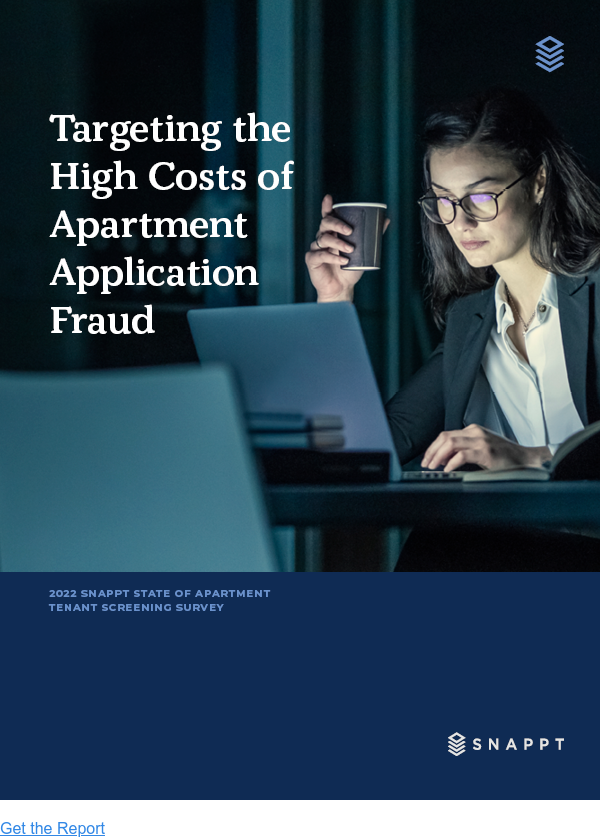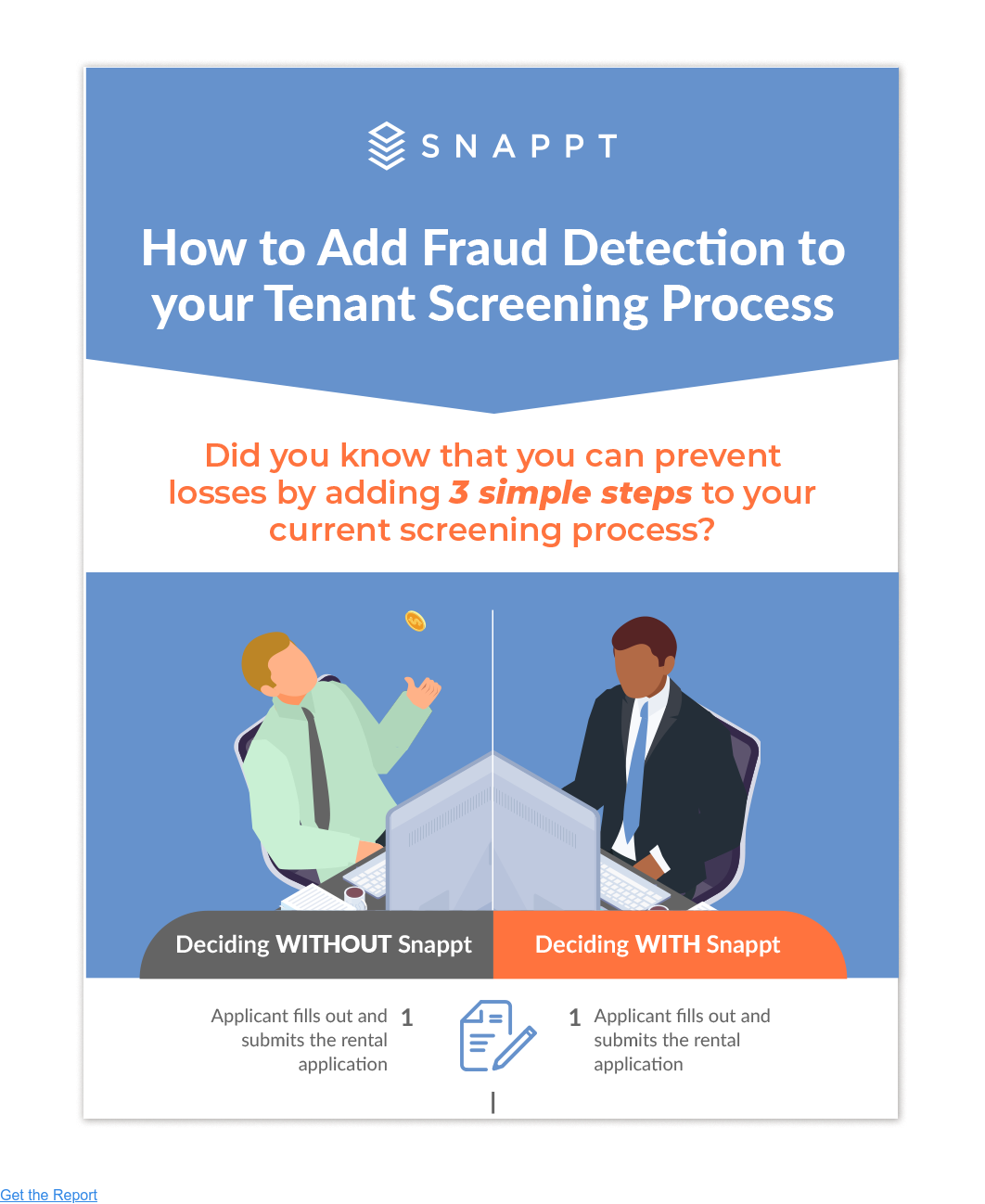Evictions are a high-ticket solution to a widespread dilemma. Property managers who employ the best practices below can drive the selection of stable tenants, which minimizes the risk of future evictions. This post is sourced from the “21 Proven Practices to Avoid the Costly Eviction Process” and focuses on the selection and screening of a new tenant. As always, managers are well served by staying abreast of federal, state, and local landlord-tenant statutes or consulting with a real estate attorney for applying management initiatives.
10 tips for property managers to select and screen a new tenant that help to prevent evictions
1. Attract quality tenants with proper advertising
Attract quality tenants with quality photos and accurate property descriptions. State the rent and required security deposit as well as the duration of the lease, if applicable. Make it clear a background check is completed for all prospective tenants, as the expectation can deter some individuals who have concerns from calling about the property. If pets are allowed, include any policy specifics on the type, size, and breed.
2. Keep your pricing competitive
Charge a fair market rent. Often, tenants will treat a property with more respect when the payment matches the amounts advertised in the neighborhood. Keep it competitively priced, while high enough to cover expenses and provide a reasonable return on your investment. Do your research, considering area construction as well as supply and demand for different seasons.
3. Make your lease agreement clear and concise
Compose your lease agreement to follow all legal requirements, including the Fair Housing Act. Since state laws vary, consider consulting with an experienced attorney who specializes in real estate law. He or she can ensure policies are fair and comply with all local and state rules, including limits on security deposits and late payment procedures.
4. Don’t miss an opportunity for pre-screening.
When an applicant emails or calls to express interest, ask if the tenant will allow you to call references and be willing to consent to a credit and background check. Determine if the tenant’s monthly income is at least two to three times the rent amount and ask them if they will have the security deposit and first month’s rent available upon lease signing. You may also gain useful insight by asking why the renter is moving; any complaints about their current living situation can be a red flag since past behavior is the best indicator of future behavior.
5. Get to know every prospective tenant
Be careful to avoid questions that could be perceived as discriminatory. Pose the same queries in the same way to all tenants and rank responses objectively, asking open-ended questions that don’t imply a specific answer or response. Pay attention to the applicant; take note of descriptions of past landlords or rental experiences and lifestyle choices and why the applicant is interested in your property
6. Credit checks provide financial insight
Credit checks provide information on payment history, residence history, prior bankruptcies or evictions, and the tenant’s credit score. A low score or poor history does not need to be an automatic disqualification. Consider circumstances such as unexpected medical expenses or shortlived credit history. Talk with the applicant about any issues that arise to give them a chance to explain the status. Always follow the rules within the Fair Housing Act, though recognize you can legally deny tenants based on poor credit, inability to pay rent, or other information uncovered by a credit check.
7. Background checks provide personal insights
Criminal history reports may search national, federal, state, and county databases to supply notice of convictions or any pending criminal cases. While most property managers traditionally gather the information, some states have passed ‘fair chance’ or ‘clean slate’ ordinances prohibiting criminal background checks. They do so based on the belief that criminal recidivism is driven, in part, by a lack of housing. Be sure to check the laws in your area; even if detailed background checks are prohibited, you may be able to check applicable sex offender registries. If the tenant has been sued in the past or is currently involved in litigation, it will show up in public records. Take note of tenants who have been sued for unpaid rent, unpaid child support, or other serious financial matters. These may indicate a pattern of nonpayment.
8. Thoroughly vet tenant applications
Tenant fraud is on the rise. One in every three applications contains some form of fraud, according to industry estimates. The deceptions vary: some applicants inflate income; others hide it or disguise its source to cover criminal activity. Review documents for visual cues, checking for apparent inconsistencies such as misaligned numbers or degraded text quality. Check that transactional details and other numbers on documents from financial institutions match formatting in verified documents you’ve received from the same source in the past. Also, make sure the numbers add up: for instance, see if claimed income totals the same amount printed on pay stubs or other financial documents.
Invest the time to verify income and references by calling numbers and clicking links listed in applications, or looking up the contacts themselves. Consider developing a script to cover necessary items every time. To ensure the person you’re speaking to is, in fact, the previous landlord or work supervisor, ask questions they can answer easily while a friend may be stumped, such as, “What was the start date for the applicant?” Remember that businesses have limitations on the information they can disclose about employees, so don’t reach beyond your role. ‘Yes’ or ‘No’ questions may aid in this effort: “The applicant stated she earns $4,000 per month. Is this correct?”
In contrast to this time- and energy-intensive inspection, many property owners fight technology-assisted fraud with technology-enabled detection like Spirited.
9. Conduct a thorough lease review with your new tenant
Set up an in-person or video meeting with the prospective tenant to review the lease agreement in detail. Phone discussions do not allow sharing papers and observing body language. Don’t expect tenants to review the information on their own. Many people avoid long documents packed with legal terminology.
Start with the most important details regarding how and when rent payments are due, late fees, and expectations for when tenants will move in or move out. Review the property’s rules and requirements. At each stage, watch for signs that the prospective tenant is taking the discussion seriously, including head nods, verbal affirmation, and questions for clarification. Ask questions to gauge the applicant’s understanding. If the tenant appears confused, take the time to review policies and ask them to summarize what they hear. If an applicant is distracted, offer to reschedule the meeting.
10. Treat the lease signing and move-in inspection as the last steps of the screening process
Ideally, you will conduct the move-in review and sign an inspection form at the same time as the lease agreement. Walk through the apartment together. Address any questions or concerns. Take time-stamped photos and encourage your tenant to do the same. If the renter seems in a hurry to get the keys and bothered by the in-depth review of the agreement, it may be a sign he or she is not serious about the financial commitment and does not respect your role as a business person.
Finally, make sure you and the tenant both receive a signed copy of the lease and collect the security deposit and first month’s rent unless local laws dictate otherwise. By communicating effectively through every step of the screening and review process, there should be no surprises for you or the tenant.
A single eviction costs properties an average of $7,500 per unit. Now, with moratoriums in place, this number is skyrocketing. This means that preventing evictions before they happen is critical to profitability for property managers in 2020 and will remain so for the foreseeable future. Hopefully, these tips have provided some ways in which you can improve your current onboarding process. If you are interested in the full recommendation list, please download the eBook, “21 Proven Practices to Avoid the Costly Eviction Process.”











